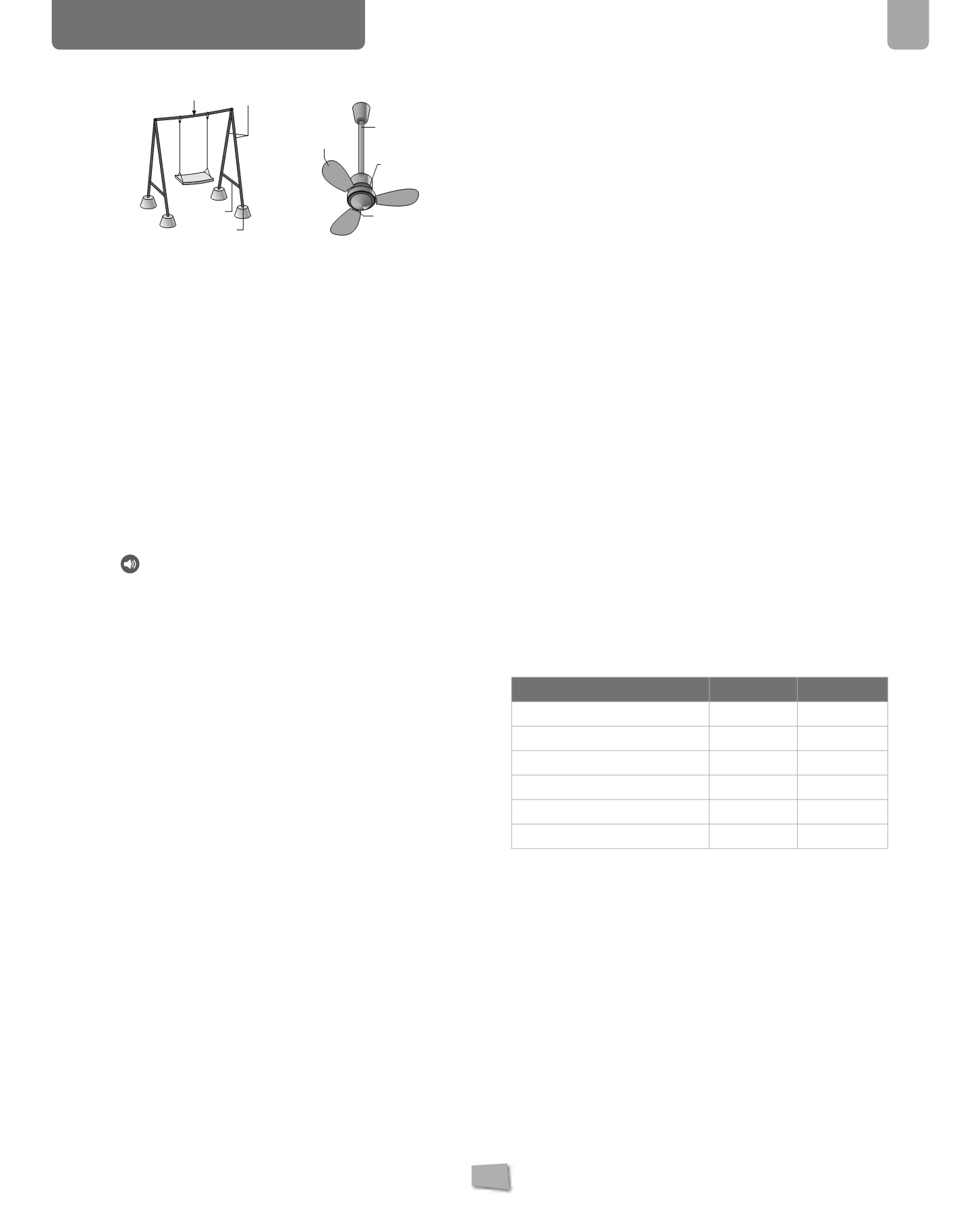
125
5
Structures
bending
traction
torsion
cutting
and bending
traction
bending
compression
bending and
compression
traction
bending
53.
When we lean back in our chair, it is more likely to
break. Why is that? Give reasons for your answer.
When leaning back, we are moving the forces that act on the
chair in relation to the vertical force in the legs. This means
that both a bending and a compression force are acting on the
leg, creating much more stress than with compression alone.
By leaning back, we put a strain on the bend. The dimensions
of a chair’s legs won’t support the combined stress.
54.
When we hang clothes on a washing line, what force
does the line bear? Think about your answer and bear
in mind what the washing lines are made of.
A washing line bears traction. However, it takes on a curved
or polygon form at those points along the line where clothes
pegs transfer the weight of the clothes. This makes it similar to
objects acted on by bending. As a cable, it deforms in order to
bear traction and support the loads exerted on it.
55.
Listen and write the structural elements you hear.
a)
Put them in the order they were used in history.
b)
Look at the photo. Which elements appear?
c)
What type are they?
Beam, arch, shallow foundation, vault, lintel, triangulation,
cable suspender, footing, pile.
In chronological order: column, lintel, beam, footing, cable
suspender, arch, vault, triangulation, shallow foundation, pile.
The elements in the photo are: cable suspenders, which are
acted on by traction. This is a suspended structure.
56.
What materials (wood, cement, stone or steel) are
used to make these structural elements: beam,
suspenders, a plinth, and a buttress?Keep in mind that
there may be other reasons to use these elements, not
just structural ones.
A beam can be made of steel, reinforced concrete and wood.
It requires a material that supports bending.
A cable suspender: of the materials listed, this can only be
made of steel. Steel resists bending effectively and can take
the form of wire or cable.
A plinth: made of concrete, footing acts as an intermediary
layer between the ground and the structure. It is not necessary
to have high-resistance material as a large surface area will be
required so that the ground can bear the forces. Steel would
be expensive and less effective.
Wood would rot once in contact with the ground. It could be
made of stone, but this is not a material that is currently used
in footing.
A buttress: needs to be made of a material that carries weight
to the structure in order to counteract the pressures of the
arches and domes. Stone or concrete would be suitable.
57.
List the advantages of reinforced concrete over stone.
Reinforced concrete has resistance to traction, which explains
why it supports bending forces. It can take any form in a
mould and is cheap.
58.
Answer the questions.
a)
What is the difference between a beam and a
column?
b)
What is each one for?
c)
What are the foundations of a building for?
d)
When do you use shallow foundations and piles
instead of plinths? Why?
A beam is horizontal and a column is vertical; a beam supports
bending and a pillar bears compression; a beam spans spaces
and a column receives loads from the beam.
The foundations of a building spread the loads of the structure
over a large area of ground, to prevent them from sinking into
the ground. Shallow foundations or piles are used in very soft
ground where a larger surface is required, such as in shallow
foundations or where it is necessary to reach a greater depth
to find firm soil.
59.
Search the Internet for these famous bridges and
aqueducts. Explain what type of structure each one is
and what materials they are made of.
❚
The Aqueduct in Segovia
❚
The Roman bridge in Cordoba
❚
The Rande Bridge in Vigo
❚
The Barqueta Bridge in Sevilla
❚
The Madrid Viaduct
❚
The San Pablo bridge in Cuenca
Bridge / aqueduct
Type
Material
The Aqueduct in Segovia
Arch
Stone
The Roman bridge in Cordoba
Arch
Stone
The Rande Bridge in Vigo
Suspension
Steel
The Barqueta Bridge in Sevilla
Suspension
Steel
The Madrid Viaduct
Arch
Concrete
The San Pablo bridge in Cuenca
Triangular
Iron
60.
Read the following statements. Are they true or false?
Give reasons for your answers.
a)
Triangular bar structures can be made of stone.
False. Stone does not support traction forces very effectively.
It does not behave well in thin pieces and they are difficult
to join together.
b)
Steel is used in solid structures.
False. Steel is too heavy and expensive to be used in mass
structures. It is used in light structures such as triangular or
suspended ones.
c)
Suspenders are only used to make structures more
stable.
False. Cable suspenders can be used to give stability and
rigidity, or as independent structural elements in suspended
structures.
CONSOLIDATION


